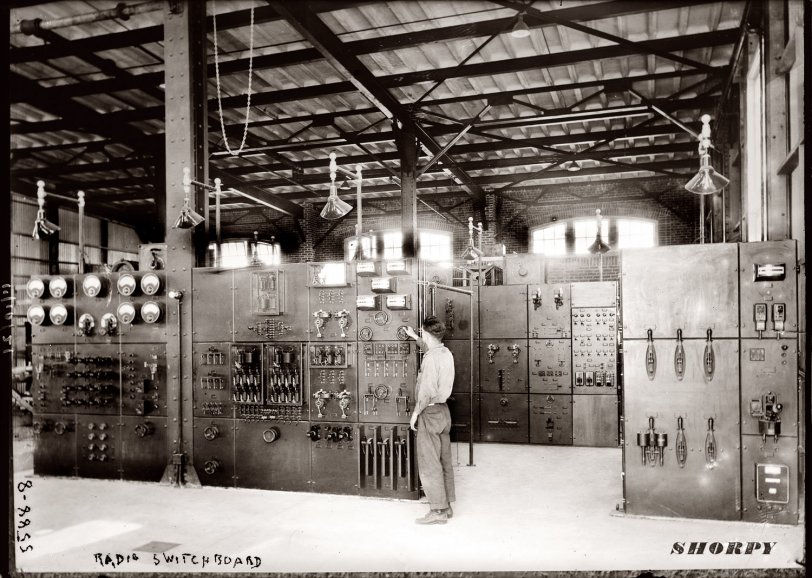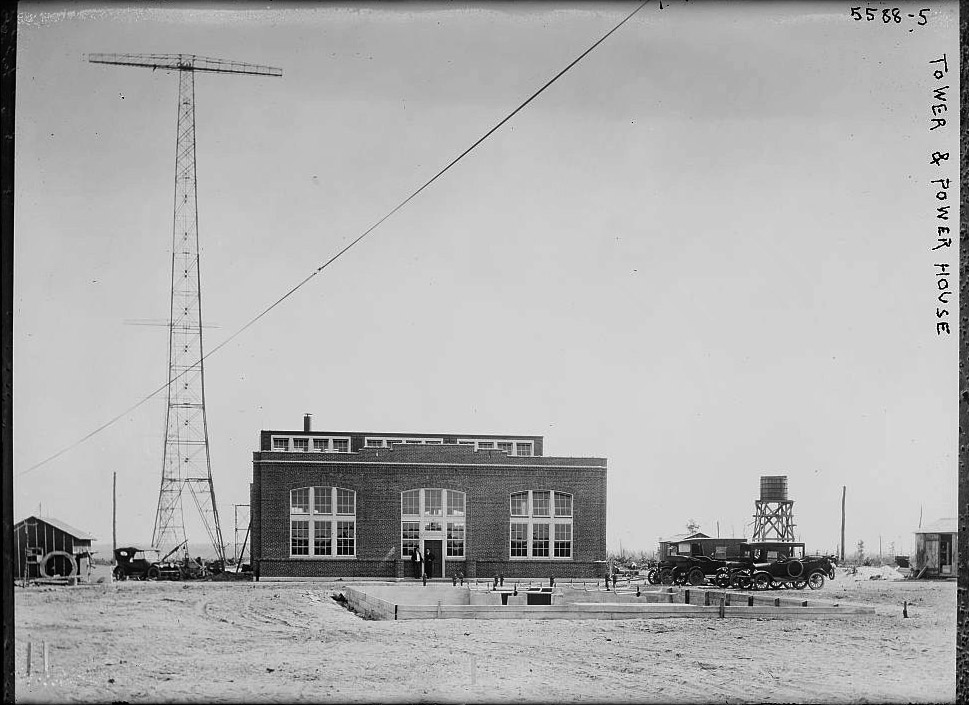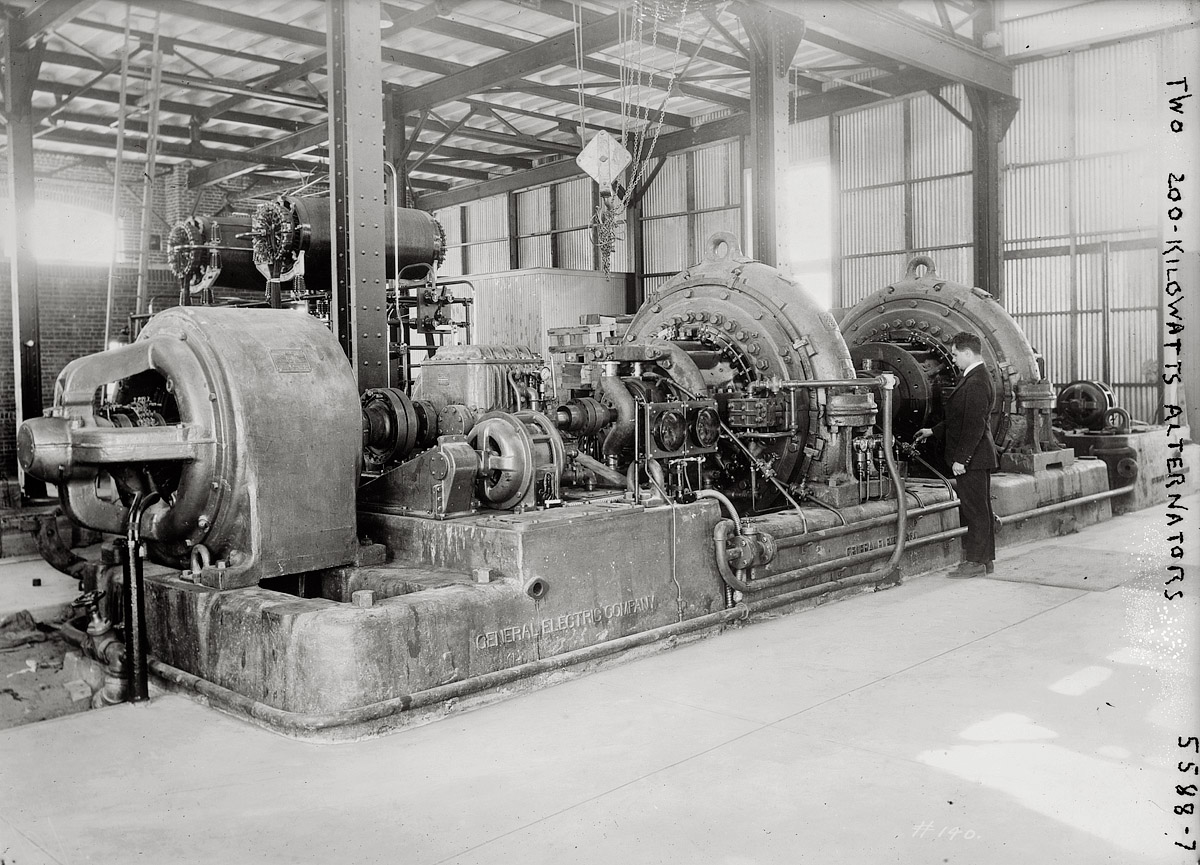


Framed or unframed, desk size to sofa size, printed by us in Arizona and Alabama since 2007. Explore now.
Shorpy is funded by you. Patreon contributors get an ad-free experience.
Learn more.

- Lofty addition
- In 1912
- Keenan Building
- Six years old
- Taken from the P.J. McArdle Roadway?
- It stood only 47 years
- Three track mind
- Incline to the right
- Reach for the sky, 1912 style
- No clean sweep
- Same Job Title, Same Face
- Sadly Lost
- Beautiful ...
- Where you get your kicks
- Aim High
- Pueblo Revival sisters
- Pueblo Neoclassicism
- Milk Man
- Regional dialect.
- Spielberg's inspiration
- Great Photo
- Loaf Story
- Do you still have the Rakes category?
- Could almost be a scene from the 1957 movie 'Hell Drivers'
- The Wages of Fear.
- Conspicuous by their absence
- Got Milk?
- All that aluminum
- No lefties
- Smoke 'em if you've got 'em
Print Emporium
Don't Touch That Dial: 1921

November 10, 1921. "Radio switchboard" somewhere in the vicinity of New York City. View full size. 5x7 glass negative, George Grantham Bain Collection.
Affirmative, Dave, I read you.
Here we see Dave maintaining the Shorpy Information Blog 9000.
Slate
Those panels were usually made from slabs of dark-grey slate, bolted to metal framework....it's all open behind the panels and made for easy access when wiring or changing bits of equipment.
Contactors for switching high voltages were always carbon/copper arrangements, with the carbon contacts being the fixed component and the copper being the moving component. When those things dropped out they'd draw a bright blue-green arc.
One of the worst things about these slate 'boards was that they would often develop cracks - particularly if they held heavy switchgear. Eventally a carbon track may build up between two adjacent fixed contacts and KA-BLEWY!
You didn't want to be near the baord when that happened!
Paging "MacZad" ...
You gotta wonder if the people who post these comments ever see the replies.
[As a matter of fact, I do wonder. - Dave]
Radio Related ?
This photo is only distantly related to radio, if it is at all related. It says "Radio Switchboard," but everything in sight is power gear. Big switches, big circuit breakers, wheel-type knobs (never used on transmitters). There is no evidence of RF transmission lines coming out of the top of any of the gear anywhere in the room. Tim Hughes comment above about being the power plant for an Alexanderson alternator is the only radio related possibility for 1921, and this huge room full of gear seems overkill even for that.
[This was a transmitter powerhouse owned by Radio Corporation of America. Below: Antenna masts, 410 feet tall, behind the building, and a pair of 200 kw General Electric alternators. Click to enlarge. - Dave]
Transmitting station
This picture predates high power valve transmitters. I suspect power plant for an Alexanderson alternator.
Power station?
These look more like a power station control panels than a transmitter. All I see are switches, relays, rheostats and meters. While transmitters had these, they also had large glass tubes visible through windows or mesh screens so the operator could see if they were arcing or over-heating. I see nothing like this here.
Westinghouse relays
I can tell you that the two devices (under the horizontal meter) in the farthest right/top cabinet are Westinghouse time-delay relays. That model relay was still being used in transmitters through the early 60s.
I love the look of
I love the look of 'old-fashioned' technology. It really blows me away.
[I agree. This one has kind of a Frankenstein vibe. - Dave]


























On Shorpy:
Today’s Top 5